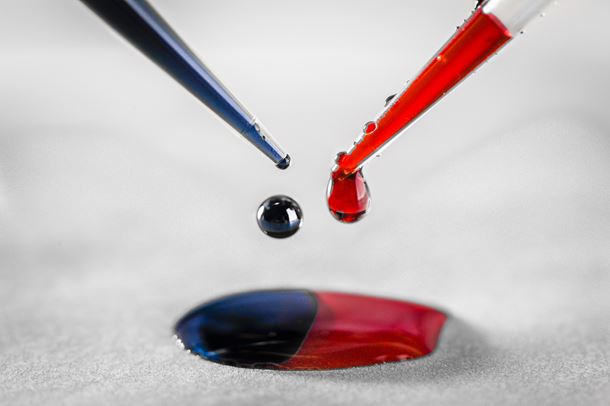“Since they are free of doping agents, they are stable over time and can be used in demanding applications. The discovery of this phenomenon opens completely new possibilities for improving the performance of light-emitting diodes and solar cells.”Simone Fabiano
A new study by scientists at Linköping University in Sweden, in collaboration with international researchers, has demonstrated an organic material that offers excellent conductivity but doesn’t require doping. In combining two polymers with different properties that needs no doping for electricity conduction, the new class of materials could help in the development of ink for printed electronics, wearable and close-body electronics, as well as conductors for bioelectronics devices.
With organic semiconductors being used in a range of optoelectronic and bioelectronic applications, their low electrical conductivity severely limits device performance. Usually, doping of organic semiconductors is key to increasing polymer conductivity and achieving improved efficiency in organic solar cells for bioelectronic applications, normally by removing an electron or donating it to the semiconductor material with a dopant molecule. This increases the number of charges and the conductivity of the material.
However, this process is only stable in the short term as the material degenerates and the substances used as doping agents tend to leach out. Here, as reported in Nature Materials [Xu et al. Nat. Mater. (2020) DOI: 10.1038/s41563-020-0618-7], with the energy levels of the new polymer mixture matching to the extent that charges were spontaneously transferred between each polymer, the conductors could potentially interface living tissues without concerns about dopants eventually leaching into the body. The combination of polymers produced a composite system that is very stable and highly conducting.
The team replaced the unstable and mobile molecular dopants with more stable and immobile polymers. Polymers have large molecular weights and do not tend to diffuse or escape the material during processes such as thermal treatments. As team leader Simone Fabiano said, “Since they are free of doping agents, they are stable over time and can be used in demanding applications. The discovery of this phenomenon opens completely new possibilities for improving the performance of light-emitting diodes and solar cells.”
Although spontaneous charge transfer between donors and acceptors has been seen for quite a while in small molecule systems, they have not been achieved before in all-polymer blends since it requires that the energy levels of the donor polymer match those of the acceptor polymer. As the electrical conductivity values of these dopant-free organic conductors is too low for practical applications, the team now hope to investigate the limits of the electrical conductivity for the systems, as well as to resolve the problem of the materials used being sensitive to air.
 Polymer combination offers dopant-free conductivity (Credit: Thor Balkhed, Linköping University)
Polymer combination offers dopant-free conductivity (Credit: Thor Balkhed, Linköping University)